The early 20th century was a time of pioneering aviation achievements. There were, for example, the first flights from England to Australia in 1919, a nonstop transatlantic flight in the same year, and around the world in 1924. That it took five years after the 28-day England to Australia flight for an attempt to be made on the 44-day flight around Australia in 1924 is testament to how difficult a journey it was, and how long stretches of Australia were more remote than, say, India through to the Dutch East Indies (Indonesia).
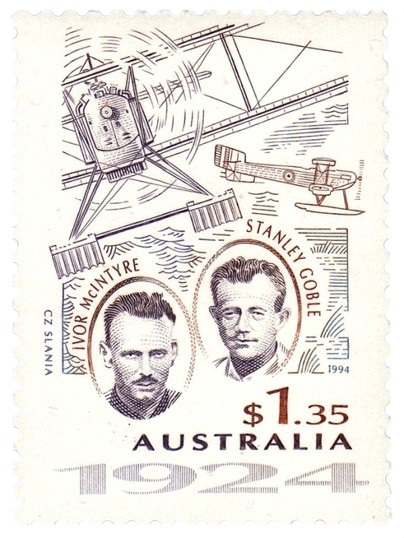
Building the three big R’s – roads, railways and runways around Australia – was great nation-building work at the time. A flight around Australia would not only “prove it could be done”, but be reconnaissance to investigate areas for airfield construction. It was the early days of air travel and public confidence was buoyed by intrepid flights. The adventure captured the nation’s attention, was spread across newspaper front pages and was followed by families listening to the wireless in their sitting rooms.
Wing Commander Stanley ‘Jimmy’ Goble and Flight Lieutenant Ivor McIntyre (G&M) of the RAAF had been tasked to undertake the mission, following the coast, and chose to use a Fairey Mk III Seaplane because there weren’t enough runways to cater for a conventional aeroplane. This caused all sorts of complications – fuel drums were delivered to about 50 rivers, lakes and beaches over several months by sea and land, so they could land on water and refuel. They often slept by the plane.
Five years of planning
In 2019 I was preparing to fly from England to Australia in Southern Sun, retracing the original flight by Keith and Ross Smith to commemorate that centenary, when I received an email from businessman and entrepreneur Dick Smith, who founded this magazine, suggesting I start planning for the centenary of the first flight around Australia in 2024. Dick has been one of my inspirational heroes since I was a teenager, so of course I said yes. That was only the first step in five years of planning and research that led to this endeavour. I was assisted enormously by Tom Lockley from the New South Wales branch of the Aircraft Historical Society of Australia, who researched and wrote a short book, First Flight Around Australia. It became my bible for the trip, guiding me to towns, bodies of water and even the dates and times to land.
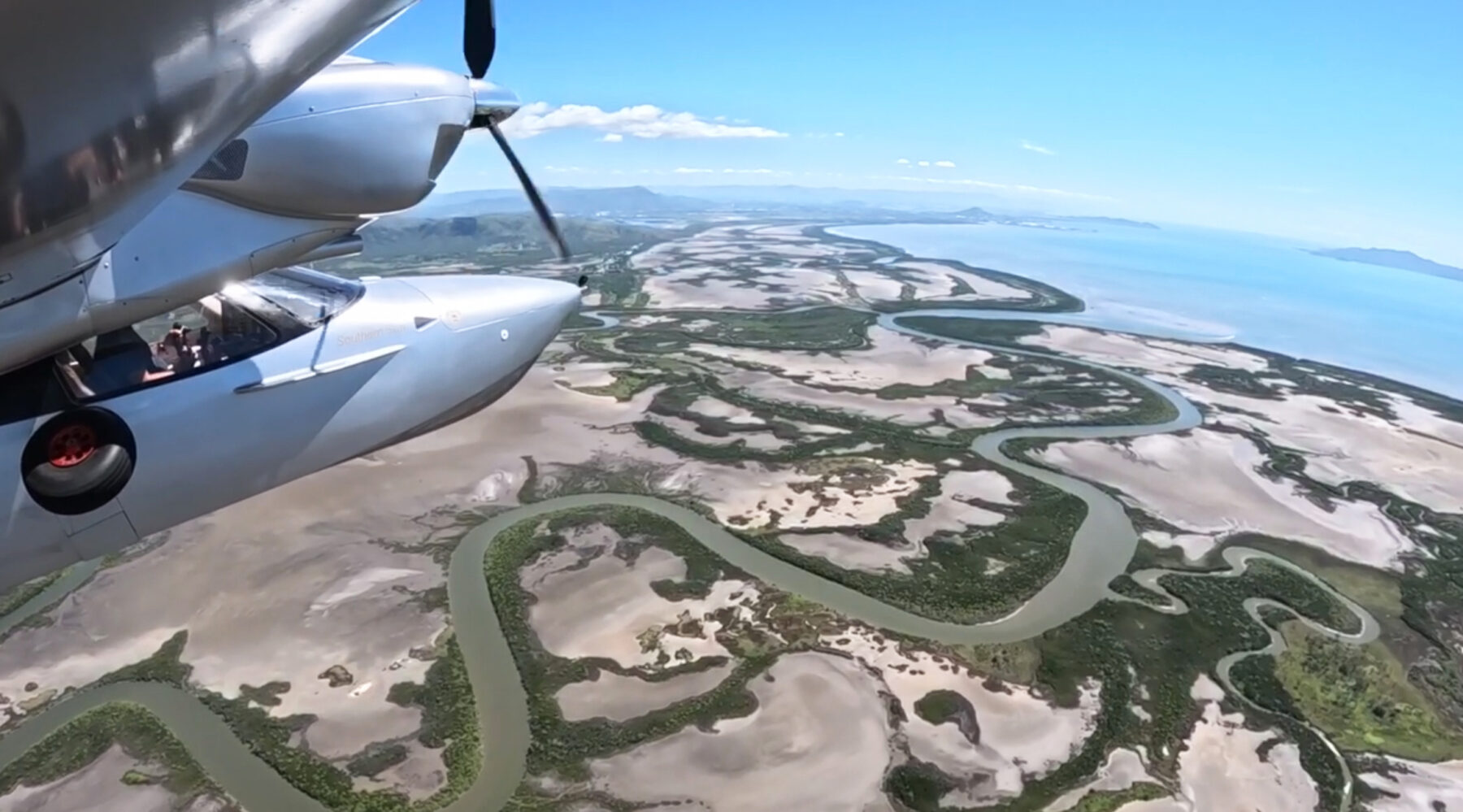

A faithful reconstruction
On the original journey there were many delays – the month they’d planned for extended to six weeks. I decided I would follow their route and dates as closely as possible, but would have to make some changes due to the passage of time, modern practicalities and even for personal satisfaction. I’d embark in Southern Sun, a twin engine amphibian, able to land on water or land. I also decided to follow the Gulf of Carpentaria coast all the way around (see map below) rather than flying directly across the top like G&M had done.
Apart from those two major changes, I planned to follow the same dates for the 44 days and choose the same landing spots, cities or towns. If G&M had been stuck somewhere for a few days, I’d wait those same days. I’d touch down on the water where they did, but then head to the closest local airport to refuel and park the plane overnight. For me to see the coast up close I’d hug the beach all the way at a height of 500ft, while filming using a standard and a 360-degree digital camera.

RAAF Base Point Cook was a land-and water-based airfield in the 1920s, with a large boat ramp and jetty for seaplane operations. G&M set off from Point Cook on Saturday 6 April 1924, a day later than planned due to rough seas. They made great progress on the first day, reaching Eden, on the far South Coast of NSW, for refuelling, then on to Rose Bay on Sydney Harbour for their first night’s stop.
My departure on Saturday 6 April 2024 was late morning, after a send-off by RAAF personnel, family and friends, leaving plenty of time and daylight to reach Rose Bay. The first stop after following the rugged coast around Wilsons Promontory was a water landing on Corner Inlet, where G&M had put down to repair a leaking fuel tank.
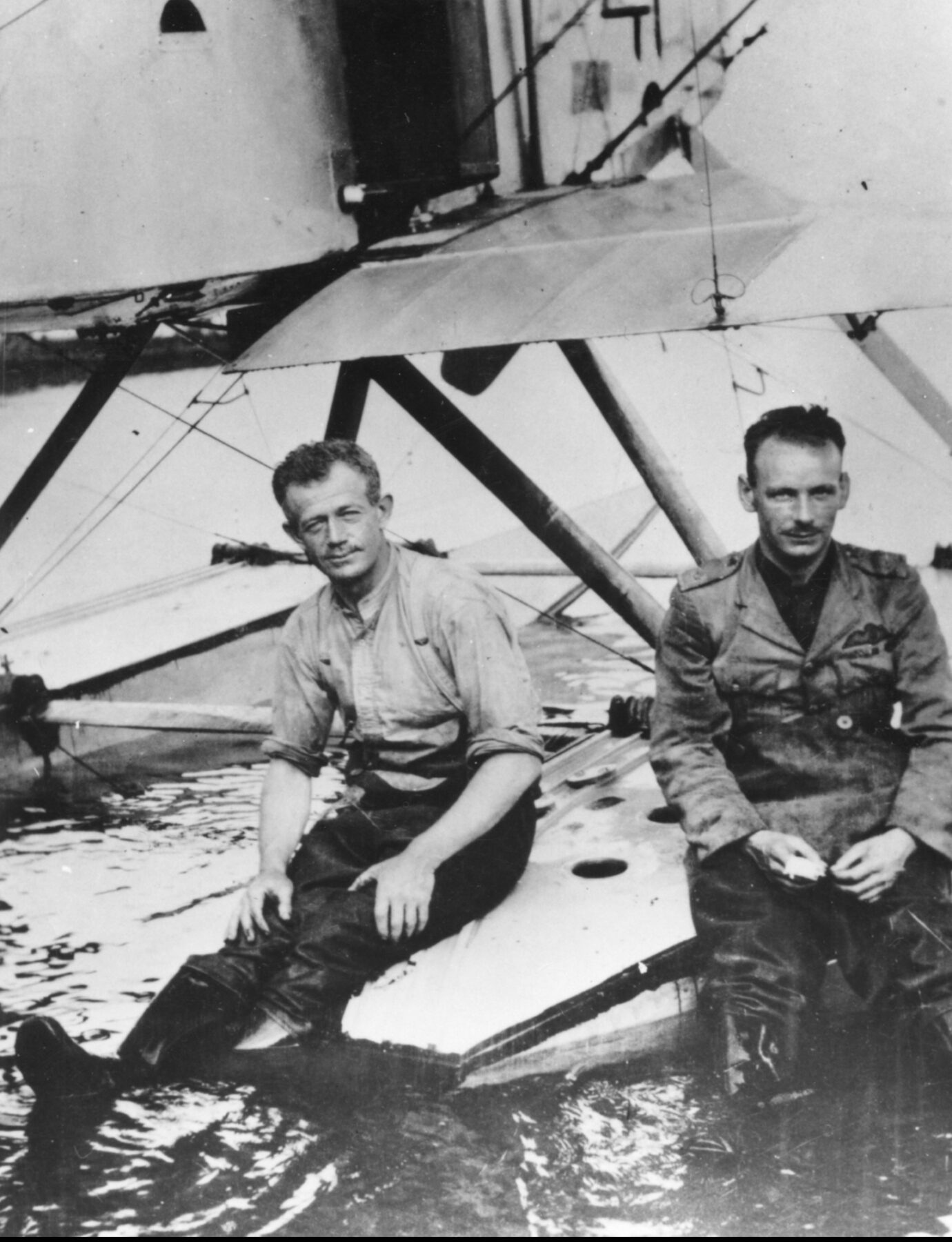
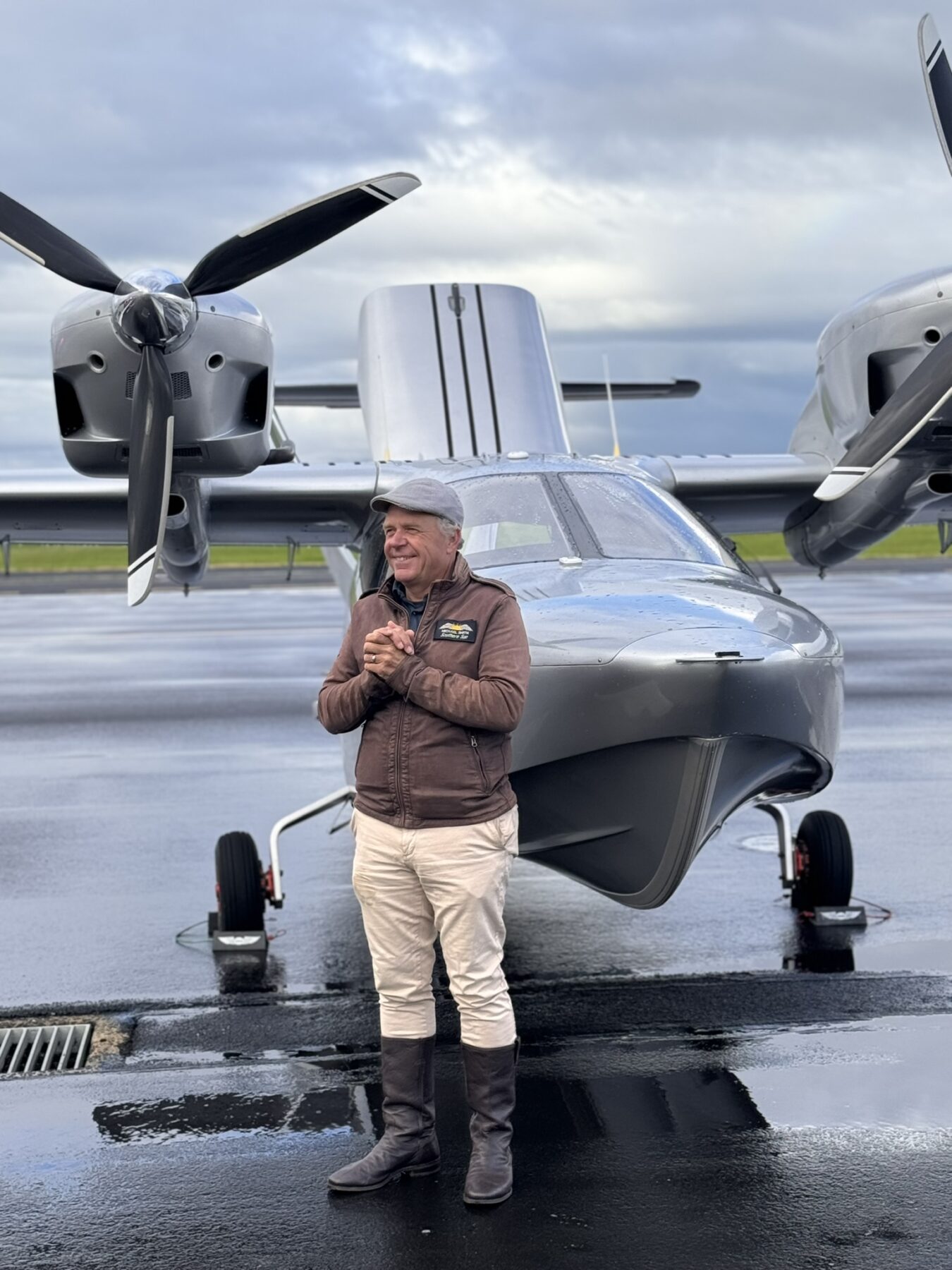
After a “splash’n’dash” (SnD) (as opposed to the “touch’n’go” performed by land planes), I noticed a lot of low cloud and scud rain rolling through, so diverted to Yarram airfield in southern Victoria to sit out the weather. Visibility wasn’t good for flying, but I could do something not possible 100 years earlier – open my iPad and study the radar display of weather moving through via the Bureau of Meteorology app. This has been one of the greatest safety advances for aviators and would be used many times throughout my trip. When the weather improved, I departed, tracking east along Ninety Mile Beach, but soon it became clear there was still more low cloud ahead. I headed to Bairnsdale, near Lakes Entrance, for the night, accepting that already, on Day 1, I was already behind! Disappointing, but safety must be the first consideration.
Next morning, a blue enough sky welcomed me back to the airfield and I continued. An SnD at Eden, where G&M refuelled, then on to Rose Bay for a never-gets-old flight over Sydney Harbour with a view of the Bridge and the Opera House, followed by an SnD at Rose Bay. It was early enough for me to recover lost time and continue on to Myall River, putting me back on schedule by the end of the day. G&M left Rose Bay at lunchtime, having waited the morning for rain to clear.
But heading north along the coast, they encountered more weather and couldn’t get more than 100ft above the water without entering cloud. North of Newcastle they abandoned plans and headed into Port Stephens, looking for shelter. They alighted on the Myall River and stayed the night. I put down on Myall Lakes and was met by local friends. We had dinner cooked over an open fire and I slept in the plane. This was one of my favourite nights of the whole trip and reset my mind from manic departure mode into adventure mode; Day 2, and I was now in the groove.

Things progressed well up the coast: clear weather, no delays, and stops in hospitable Southport and Gladstone in Queensland.
My arrival in Townsville needs special mention. A couple of weeks before the trip I was contacted by the RAAF 6 Squadron, based at Amberley, near Gladstone. They confirmed the RAAF would commemorate the centenary with a circumnavigation of Australia by a pair of EA-18G Growler aircraft, taking seven days, and they’d time their departure to rendezvous with me in the air over Townsville, then we’d park together overnight at the air base: very exciting and not something private pilots ever experience!
Beyond Townsville I continued up the increasingly undeveloped coast. G&M had three nights in Cooktown to repair a compass, so I stayed for three nights. Just as well – both days there it rained relentlessly and I couldn’t have flown anyway.
Awe-inspiring Kimberley
I was looking forward to Cape York, where G&M spent seven days on Thursday Island because of weather and for maintenance. After a splash on the protected water to the north-west of the island, I flew into Horn Island, which has full airport facilities and even commercial flights from the south. I was keen to see some of the Torres Strait islands from the air, before visiting by boat on a few spare days ahead. My wife flew in with Qantas, and we spent a few days exploring Horn, Prince of Wales, Thursday and Friday islands. From beautiful beaches to a fort, a historic cemetery to a pearl farm, a local art gallery to discovering a scrumptious crayfish toastie for lunch – it was a wonderful, if brief, taste of the area.
Rather than wait a week, on the fourth day I ventured south along the coast to follow the shoreline of the Gulf of Carpentaria for a few days, including dropping in to see my brother and his family who live on Vanderlin Island, about halfway along the Gulf, north of Borroloola. I then had a night on Elcho Island before arriving in Darwin for a few nights, then on to two highly anticipated days in Western Australia’s Kimberley – my first time. The further from Darwin and closer to Napier Broome Bay I flew, the more spectacular the scenery became, but it was next day, en route to Broome, that the Kimberley’s full allure was revealed. All the awe-inspiring beauty that’s made it one of the world’s bucket-list destinations lay before me. The Horizontal Falls, my single most anticipated destination, did not disappoint. At the time of my arrival mine was the only aircraft in the area, so I had complete access, allowing me to explore over and around the falls. Gobsmacking indeed…if two days of this coast had been a perfect degustation of visual treats, then this was the cherry on top.


Arriving in Broome on a high, I was greeted warmly by the ground crew and air-traffic controllers. The Horizontal Falls air-tour operators even put Southern Sun up in their hangar for my stay. My two nights there let me catch up with some other seaplane pilots who were on a clockwise flight around Australia and also visit one of my favourite places – Sun Pictures, the oldest outdoor cinema in Australia. It’s a real Broome institution. On to Port Hedland, where I spoke to School of the Air kids on an excursion and showed them over the plane. Next, Carnarvon, where everything was about to come to a grinding halt.
G&M arrived in Carnarvon on the Facine, the sheltered stretch of water in front of the town that today has a lovely boardwalk and provides safe anchorage. When they tried to depart the next day, they were unable to attain full power on the engine. The engineer tried but failed to remedy the problem, leading to an unplanned 10-day delay. Luckily, they had a spare Rolls Royce engine in Perth, just in case it was needed. Today, it’s a 10-hour drive to Carnarvon on a sealed highway, but back then it took seven days, on a train then a truck on a difficult track. Once the engine arrived, it was exchanged and tested successfully in a single day, all the more amazing because there was no crane available and they were working in shallow water on the beach where the plane was resting.
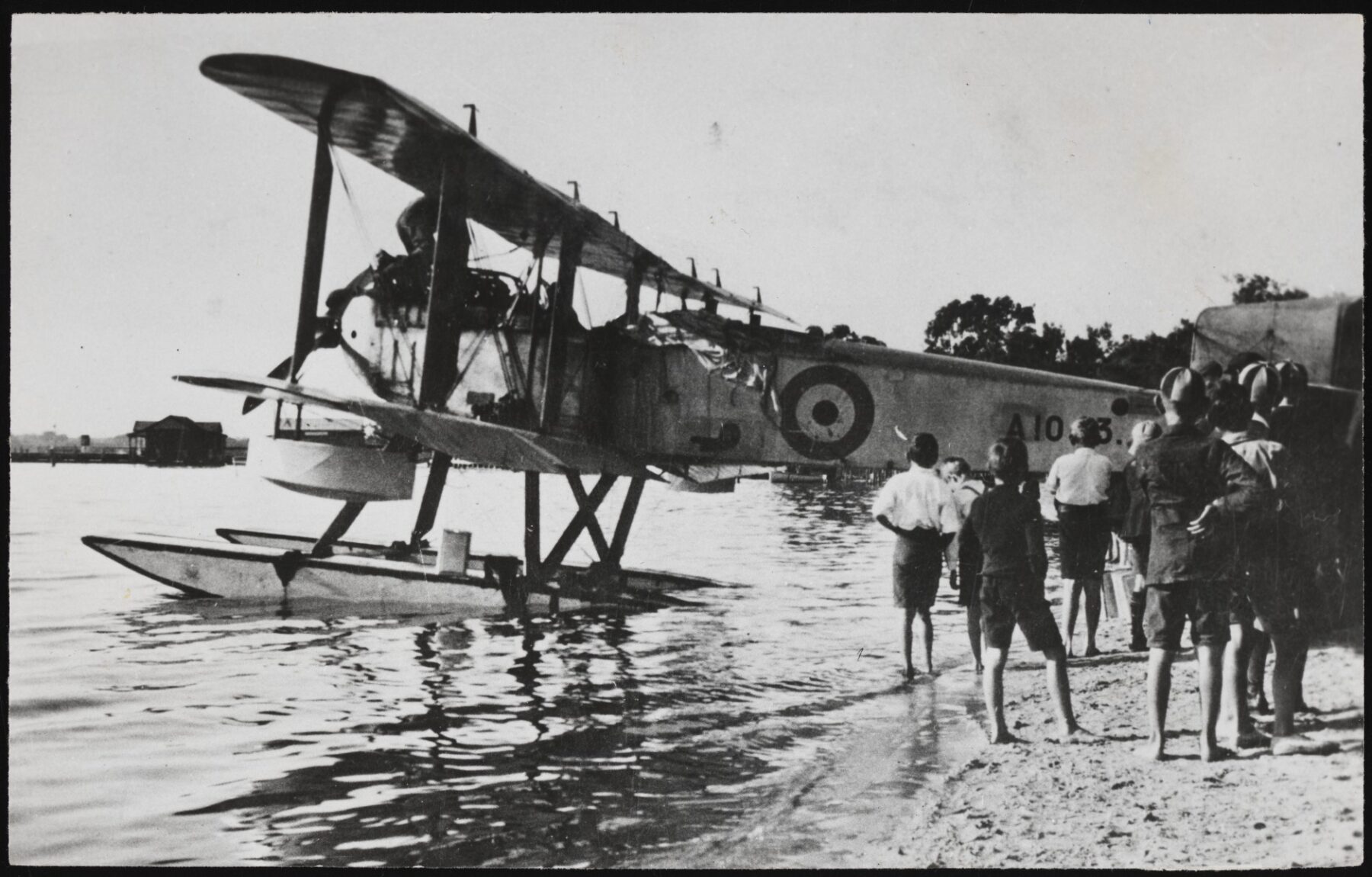
I made good use of the 10-day Carnarvon stop, meeting locals, visiting the excellent Space and Technology Museum and speaking at schools. I carried out maintenance on my plane in the Coral Coast Helicopters hangar and caught up on work and some writing. On 11 May 1924, Day 36, G&M restarted their journey southbound, as did Southern Sun in 2024, with a brief splash in Geraldton then on to Perth, where they alighted on the Swan River at 4.15pm for an overnight stop. I was excited to land on the Swan, at Elizabeth Quay, parallel to Langley Park just south of the CBD, a spectacular location, and was determined to land 100 years to the minute after G&M. With the help of Perth’s Air Traffic Control, Swan River Seaplanes and a few minutes of orbits overhead, I successfully splashed down right on 4.15pm – huzzah!
The next few days saw stops along a coastline visually the equal of the Kimberley – the Margaret River region, Albany, Esperance and onto Israelite Bay – for one of the more memorable nights of the journey. G&M stopped on the semi-protected waters of Israelite Bay, in the Great Australian Bight, at the Telegraph Station. Today, that building is abandoned, the roof and other features long removed by the passage of time and weather. But striking ruins remain, with no-one in sight. I was able to land on a sandy strip beside a dry lake and spend the night, camping in the plane. I took a long walk around the area to the beach and through the ruins, finishing with a slightly sad tin of tuna. However, thanks to clear skies and a carpet of stars, it was both surreal yet splendid.
The most spectacular day
Thee longest flight of the trip was next, across the Bight to Ceduna in South Australia. There was simply nowhere suitable for water landings across this famously rugged coastline. I thought a lot about the several people who have circumnavigated Australia by kayak…this would be one tough stretch to conquer. The cliffs along this coast are 60–120m high. On a most spectacular flying day, sitting 500ft above the ocean, I was awarded an incredible view back to the cliffs, at times seeing the Nullarbor Highway and people parked by the cliffs’ edge. I found myself pondering the images we see of huge chunks of Antarctic ice falling into the sea each season, and wondered whether my video camera might chance upon a rock version of it during these couple of days. Alas, all remained intact (for now).

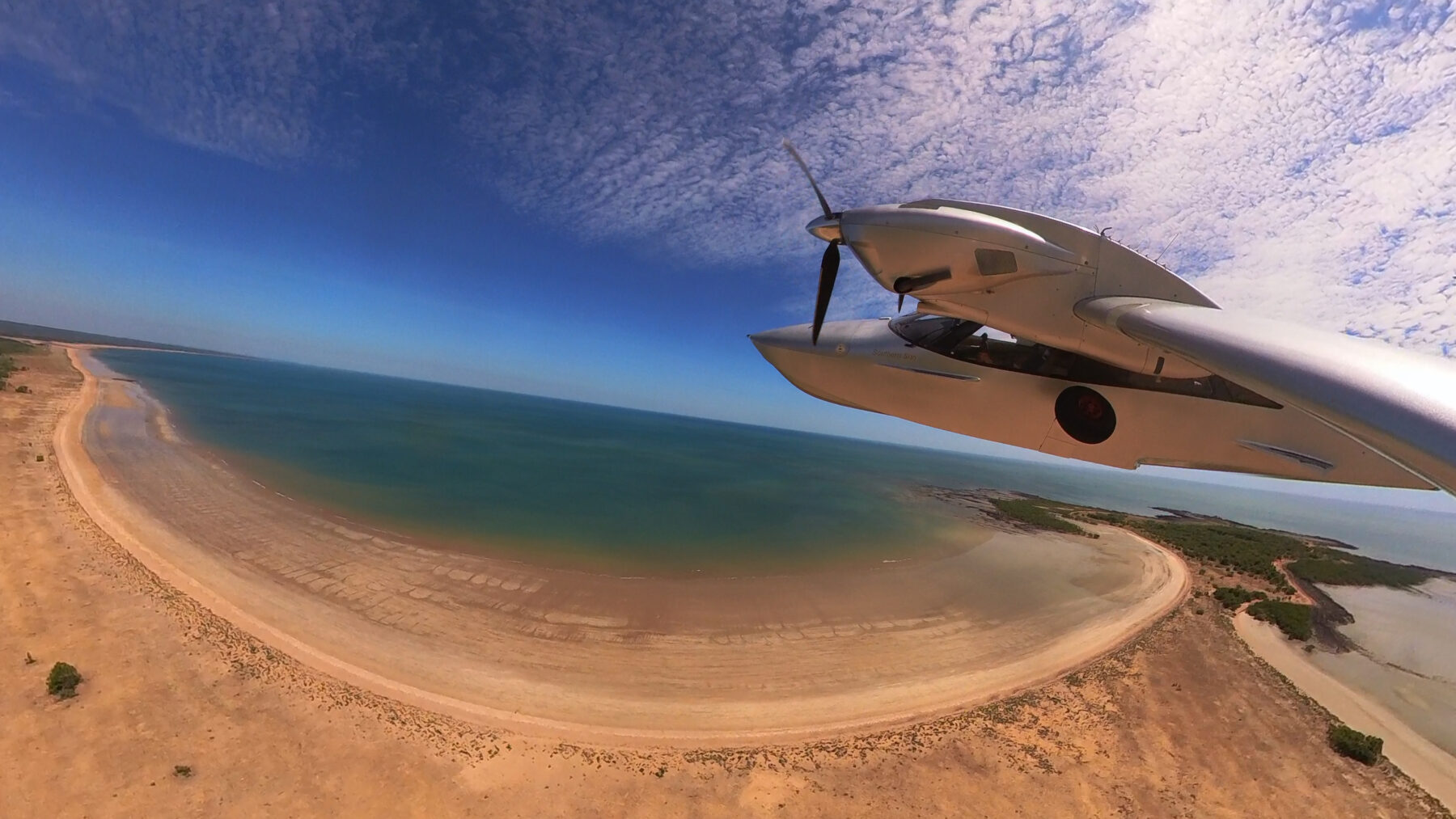
The next leg, from Ceduna to Port Lincoln, would be judged, by me, to be winner of the Southern Sun Award for the most spectacular day of the entire Australian coastline. It was so varied, with dramatic cliffs faces in colours from rich red, brown and off-white, along with vast dunes, white sandy beaches, azure blue water and intricate bays. It was a smorgasbord of nearly everything I’d seen over six weeks. That night, to top it all off, I enjoyed fresh Coffin Bay oysters from the waters I’d flown over only hours earlier.
On reflection, the Kimberley came a close second. That region really does deserve the accolades and sense of awe in our collective psyche.
The joy of followers
With only two days to go, a mixed sense of relief of nearly being home and sadness that it was nearly over, yet trepidation that anything could still go wrong, kept me alert. Here I flew the longest over-water stretches of the journey as I crossed the Spencer Gulf and Gulf of St Vincent, past Kangaroo Island, to reconnect with the coast at Cape Jarvis. Then along the almost mythical sandy stretches of the Coorong (thanks to a childhood instilled love of Storm Boy), towards Beachport. Alas, on Day 43 of the trip, it was too rough to alight. This was a shame because quite a crowd of locals were there to meet Southern Sun, so I performed a few orbits over the Beachport town and foreshore and continued on to the closest local airport at Millicent. There, as with many of the airfields en route, I was greeted by locals who had been following the flight. This is one of the joys of all travel, meeting people along the way, connecting with communities, albeit quickly. There is often a cuppa, a chat and a lift into town on offer.
Sunday 19 May, Day 44 – the final leg. A pretty tough day of flying, frankly, with a lot of weather to fly around along the coast, passing the Apostles, through the heads and up Port Phillip, to an orbit over St Kilda then back to overhead Point Cook at exactly 2.10pm, 100 years to the minute that G&M arrived.

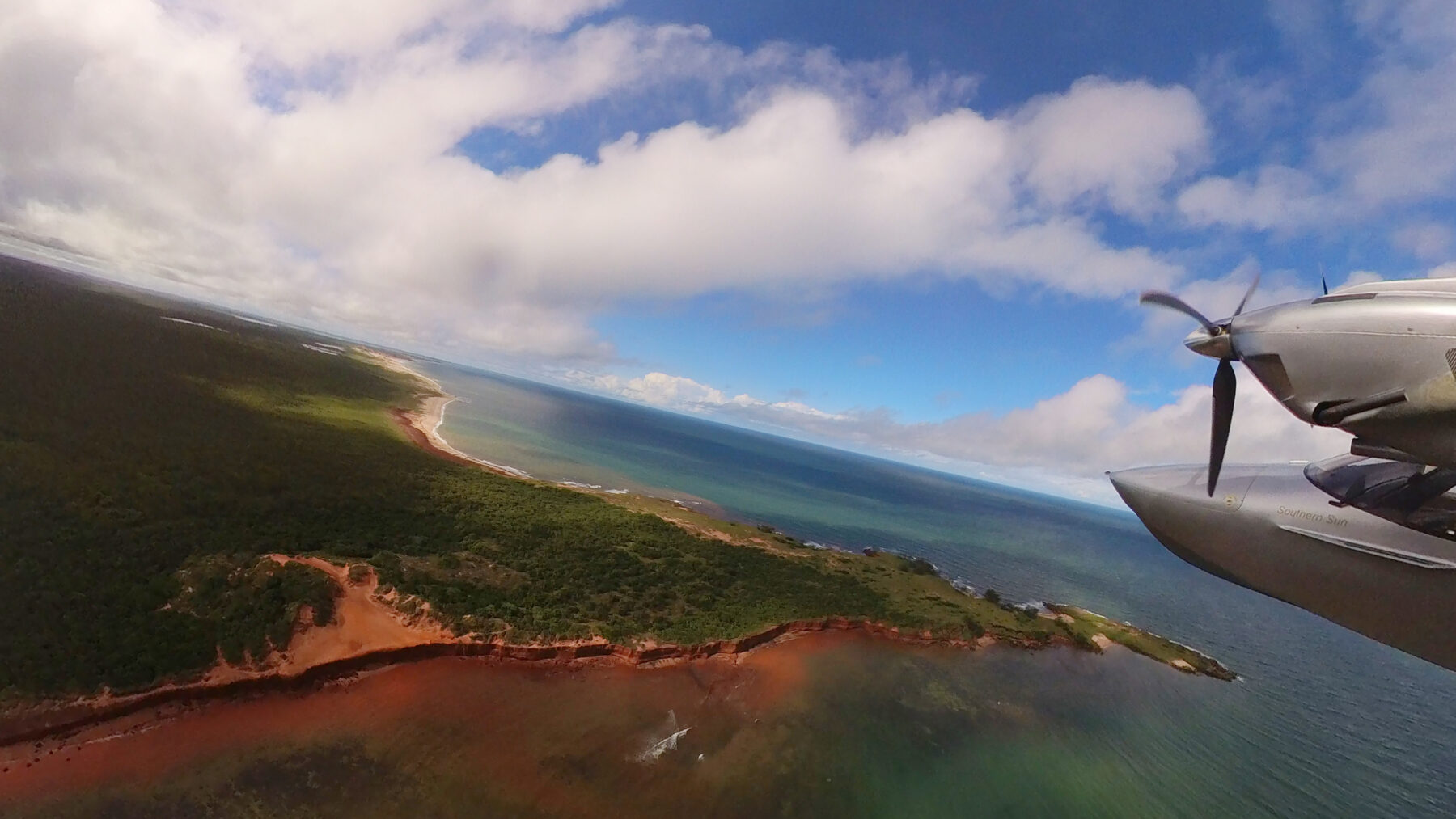
A splendid afternoon of welcome-home celebrations followed. I was a tad elated to find a crowd, an RAAF flight display, two pairs of fire trucks forming a water arch to taxi through and even the Air Force Band, which played at the return of the original flight 100 years ago. A huge thanks to the RAAF.
Reflecting on the original flight, while looking at what has changed in 100 years – without a doubt, planes are more reliable today. G&M navigated with a compass, a speedometer and a watch. Today, GPS tells us exactly where we are, reducing both workload and stress levels! They often spent hours fuelling the plane, transferring small tins while wading through the water to the plane to make up the 400 litres needed. Today there are hundreds of airports around the country equipped with fuel bowsers, making it generally as easy as filling a car. G&M didn’t have a radio and could go days without being in touch with the outside world, with people worried for their safety, whereas today we have access to aviation radio, satellite tracking and Internet, and mobile phones working on about 80 per cent of the coast. They didn’t take a camera, while I had a digital camera and two video cameras running, even live-streaming at times.
But what I did find that was remarkably the same was the weather – G&M were delayed in certain areas, mainly the east coast, Cape York and the Gulf of Carpentaria. At the same time of year I also faced the same problematic weather – so it seems 100 years later, autumn low cloud and heavy rain are still a challenge for small planes. I went four weeks straight without a drop of rain after the Gulf of Carpentaria, until crossing the border from SA into Victoria on the last day. Of course it rained – welcome to Melbourne!
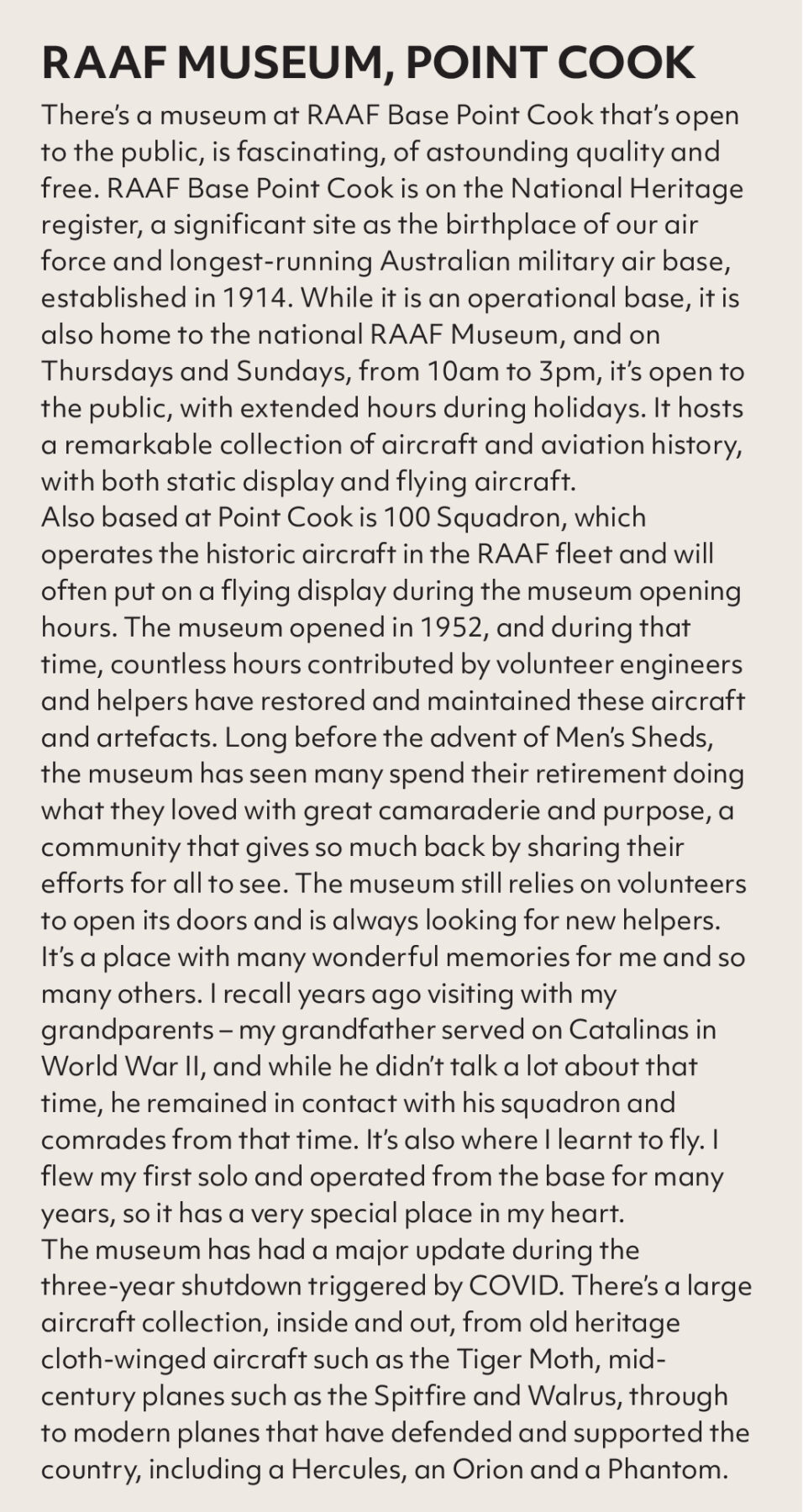
Another thing that thankfully hasn’t changed is the generosity of strangers and how communities come together to help each other. In 1924 they always found the locals would help them to refuel, beach the aircraft or help lift it off when the tide went out further than expected, be fed and bedded when needed. Similarly, I had people always willing to give me a lift, offer a bed or put on a barbecue dinner for locals interested in the flight, wanting to chat and learn more. Especially in the regions, hospitality and helpfulness is alive and well.
Finally, as I flew past the many towns of the east coast of Australia, I reflected on the changes to infrastructure and cities along the way, what we would typically call the “progress of civilisation”. But once I passed Cooktown to the north, signs of humankind became a rare sight, and for the next month, most of the time I didn’t even see buildings, let alone cities; the vastness of uninhabited Australia prevailed. It really sank in that, for the vast majority of this country, 100 years is a mere blip in time. For so much of the myriad of stunning, rugged and gorgeous coastline, nothing much has changed over 10,000 years.
This centenary is also an RAAF celebration, while I am proud to be sponsored by Australian Geographic to retrace this journey and share the story. I carried commemorative airmail, an AG flag and an RAAF Ensign (flag) throughout the trip. The latter has now been donated to the RAAF Museum at Point Cook, and will form part of a display. It’s been a wonderful experience, which I look forward to sharing more of. But for now I’m getting back to work until the next big idea comes along!
To see more, visit southernsun.voyage/aroundoz100 or the SouthernSunTV YouTube page, where there are multiple videos of scenery covering the journey. There simply aren’t enough adjectives to adequately describe the beauty of our coastline.

